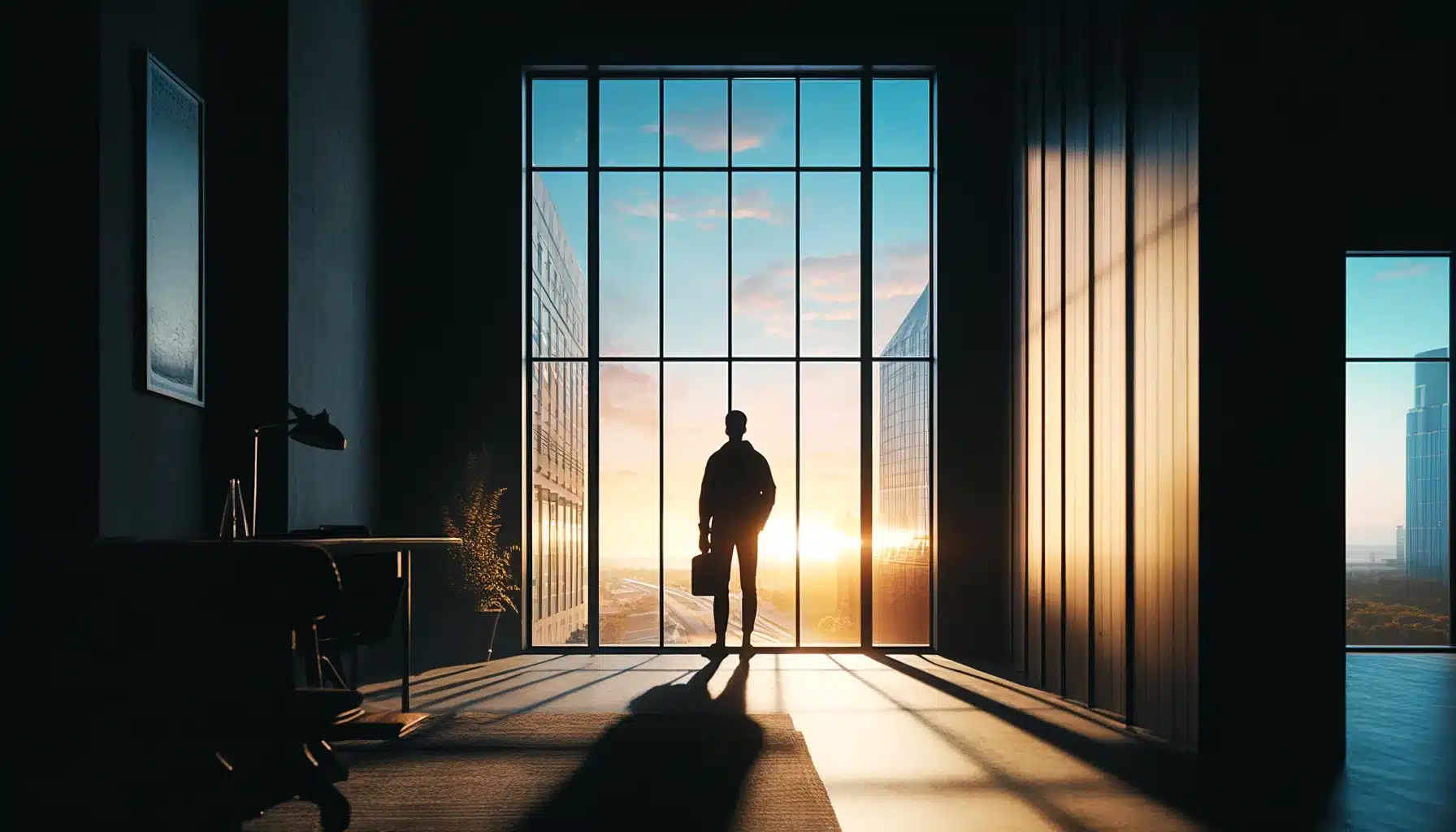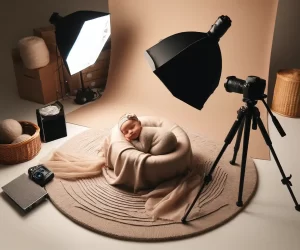
Introduction on How to do Silhouette Photography
Silhouette photography is a way to take pictures where the subject looks dark against a bright background. This technique makes dramatic and eye-catching photos. Knowing how to do silhouette photography can help you capture amazing shapes and forms. You can try many silhouette photography ideas, like shooting at sunrise or sunset.
In this article, we will show you how to create professional-looking silhouettes. You will learn about the lighting conditions, essential equipment, and techniques for perfect silhouettes. We will also give you tips for taking silhouette portraits indoors and outdoors. Plus, we have advice on editing your photos to make them look even better.
Table of Contents
Understanding Light and Shadow in Silhouette Photography

Light and shadow are key elements in learning how to do silhouette photography. Here you can understand how they work to make your images stand out.
The Role of Backlighting in Silhouette Creation
Backlighting means the light source is behind your subject, not in front. The bright light from the back helps to make the subject appear as a shadow. For example, if you are photographing a person at sunset, position them between you and the sun. The sun will lighten up the sky and create a beautiful background, while your subject remains dark. This method works great because it naturally produces the seamless color difference for silhouettes. Another good time to try this is during sunrise when the light is similar.
Balancing Light and Shadow for Clear Silhouettes
Balancing light and shadow is important to make sure your silhouette is clear. You need to make sure that the background is much brighter than the subject. If the brightness levels are too similar, the subject will not appear dark enough. Put your camera in spot metering mode. When you press the camera button halfway, the exposure will be adjusted based on the bright background. Then, recompose your shot and take the image.
Silhouette Photography Equipment Checklist
Choosing the right equipment is essential for stunning silhouette photo creation. Check out this table to learn about the key tools and equipment needed for your silhouette portrait photography needs.
| Equipment | Description | Example Use Case |
|---|---|---|
| Camera | DSLR or Mirrorless cameras for manual controls and better quality. | Capturing detailed subjects at sunset or sunrise. |
| Lens | Wide-angle lenses for landscape photography; Prime lens for sharpness and aperture control. | Photographing wide scenes or isolating subjects. |
| Tripod | Keeps the camera steady, especially in low light conditions. | Shooting during low illumination like early morning. |
| Remote Shutter | Prevents camera shake when capturing images. | Using long exposure to capture smooth, sharp images. |
| Editing Software | Programs like Adobe Photoshop or Lightroom for and utilize options like Spot healing brush. | Adjusting colors and enhancing contrast in silhouette pictures. |
Camera Settings Tips for Perfect Silhouette Photography Ideas
Before you start, don your camera with the proper settings for shooting stunning silhouettes. The right adjustments can create interesting compositions for perfect silhouette portraits.
Correct Aperture for Silhouettes
Using the correct aperture is important for silhouette photo shoots. Typically, an f-number of f/8 or f/11 works well and helps keep the entire subject in focus. For example, if you are photographing a tree, setting your aperture to f/11 ensures the tree’s outline is sharp against the glowing sky. This allows enough light from the background to create a strong variation of colors.
Shutter Speed and ISO
Shutter speed and ISO also play a crucial role. Adjust your camera to a fast shutter speed, like 1/250th of a second. This helps capture clear outlines without blurring. Use a low ISO number, such as 100, to avoid grainy photos. For instance, when capturing a person jumping when the sun is down, a fast shutter speed will freeze the action, and a small ISO will keep the image crisp and clear.
Spot Metering and Exposure Compensation
Spot metering helps the camera focus on the brightest part of the scene. This keeps the subject shadowy. You can exposure compensation to further darken the subject if needed. For example, keeping exposure compensation to -1 can enhance the shadow effect, making the silhouette more pronounced against a well-lit background.
How to do Silhouette Photography Indoors and Outdoors – A Detailed Step-by-Step Tutorial

Silhouette session can be done both indoors and outdoors, offering unique opportunities and challenges. Here’s how to do silhouette photography at home or outside.
Capturing Silhouettes Outdoors
- Choose the Right Time: The best timings are during sunrise or when the sun is down. This creates a glowing sky and a clear subject outline. Find a location with a clear view of the horizon to make the composition interesting.
- Position Your Subject: Place your subject in front of the sun. For example, photograph a person standing on a hill with the sun behind them. This ensures the subject appears as a shadow against the bright sky.
- Adjust Your Camera Settings: Use a small aperture like f/8 or f/11 and a fast shutter speed to keep the image sharp. Put your camera to spot metering mode to measure the brightness from the sky. This makes sure your subject remains a shadow.
Capturing Silhouettes Indoors
- Find a Strong Light Source: Use a large window or a big lamp behind your subject. This creates the necessary contrast. For example, position a person in front of a large window with the afternoon sun streaming in.
- Set Up Your Camera: Place the camera to face the window or lamp, with the subject in between. Use a small aperture and adjust the ISO to keep the image sharp. Spot meter on the brightest part of the scene to ensure the subject is captured as a shadow.
- Create an Interesting Composition: Arrange your subjects creatively. You can capture a child playing near the window or a person reading by a lamp. The strong backlight will make their shapes stand out.
Daylight vs. Artificial Light for Silhouette Photography Ideas
Exploring the difference between daylight and artificial light is crucial in learning how to do silhouette photography. Here is a comparison to help you make the best decision for your silhouette photography ideas.
| Feature | Daylight | Artificial Light |
|---|---|---|
| Source | From the sun. | From lamps, flashlights, or studio lights. |
| Availability | Limited to specific times like sunrise or sunset. | Always available, regardless of natural conditions. |
| Quality | Soft and warm, ideal for natural shadows and silhouettes. | Can be harsh or soft depending on the setup and modifiers used. |
| Consistency | Varies throughout the day and with weather conditions. | Consistent and controllable, good for repeated results. |
| Flexibility | Requires the right timing and location to capture amazing shots. | Can be used anywhere, offering greater flexibility in choosing the location and time. |
| Cost | Free, as it uses natural light. | May involve additional costs for equipment like lamps and modifiers. |
| Setup | Simple, mainly involves choosing the right timing and direction. | Requires planning and positioning of lights and modifiers to achieve desired effects. |
Common Challenges and Solutions in Silhouette Photography
Many beginners face problems when creating silhouette portraits. Here are some common challenges you might face and solutions that will improve your silhouette photography ideas and make the process easier.
Achieving the Right Contrast
Getting the right contrast can be difficult and the subject does not appear as a clear shadow. To solve this, ensure the illumination source is behind the subject. Adjust your camera settings to use spot metering. This helps measure the brightest part of the scene, keeping the subject shadowy.
Avoiding Unwanted Details
Sometimes, unwanted details in the frame can distract from the silhouette. To fix this, check your composition carefully. Make sure there are no objects overlapping with your subject. For instance, if you are photographing a person, move them so that no trees or buildings interfere with the outline. This creates a clean and striking image.
Managing Motion Blur
Motion blur can ruin a silhouette image. To avoid this, use a fast shutter speed. This freezes the movement and keeps the edges sharp. For example, when shooting a person running, set your camera to a high shutter speed like 1/500th of a second. This ensures the person appears as a clear outline.

FAQs on How to do Silhouette Photography
Creating beautiful silhouettes can be tricky but rewarding. Here are answers to common questions about silhouette photography ideas and how to master this art.
What settings should I use for silhouette photography?
Use a small aperture like f/8 or f/11 to keep the subject in focus. Use a reduced ISO, such as 100, to avoid grainy photos. Use spot metering to measure the brightest part of the scene. This ensures the subject remains shadowy. These adjustments are key to capturing striking silhouette photography ideas.
How to make your photo silhouette?
To turn your picture into a silhouette, place the subject before a window, so the light source is behind the subject. Adjust your camera to spot metering and focus on the brightest area. This keeps the subject in shadow. When editing the image, increase the contrast to enhance the effect. For instance, photograph a person standing by a well-lit window.
How do I take a silhouette photo?
Taking a silhouette photo involves a few easy steps. First, position your subject in front of a strong illumination source. Use a small aperture and a low ISO value. Focus on the bright part of the scene using spot metering. Take the shot, then adjust the color difference during post-processing to make the silhouette stand out.
What technique is silhouette?
Silhouette is a technique where the subject appears as a dark shape against a brighter area. It highlights the outline while hiding details. This helps in creating striking and dramatic silhouettes. Strong illumination sources like the sun or windows work well for this technique.
Conclusion
Learning how to do silhouette photography can be a fun and creative journey. I remember the first time I tried it, shooting a beautiful sunset by the lake. The silhouette of the trees against the glowing sky was stunning. I used a small ISO number and spot metering, and it worked great.
If you enjoyed these silhouette photography ideas and want to learn more, check out our tutorials. Our Photoshop course and Lightroom course offer detailed lessons to help you master photo editing and craft amazing silhouettes. Sign up today and take your skills to the next level!
Have a nice photoshoot!
Learn more about Photography Techniques:
Course
Light Effect Photoshop
Lightroom Course 2024
Adobe Photoshop Course
Photo Editing Course
Get the latest version of Photoshop & Lightroom

















